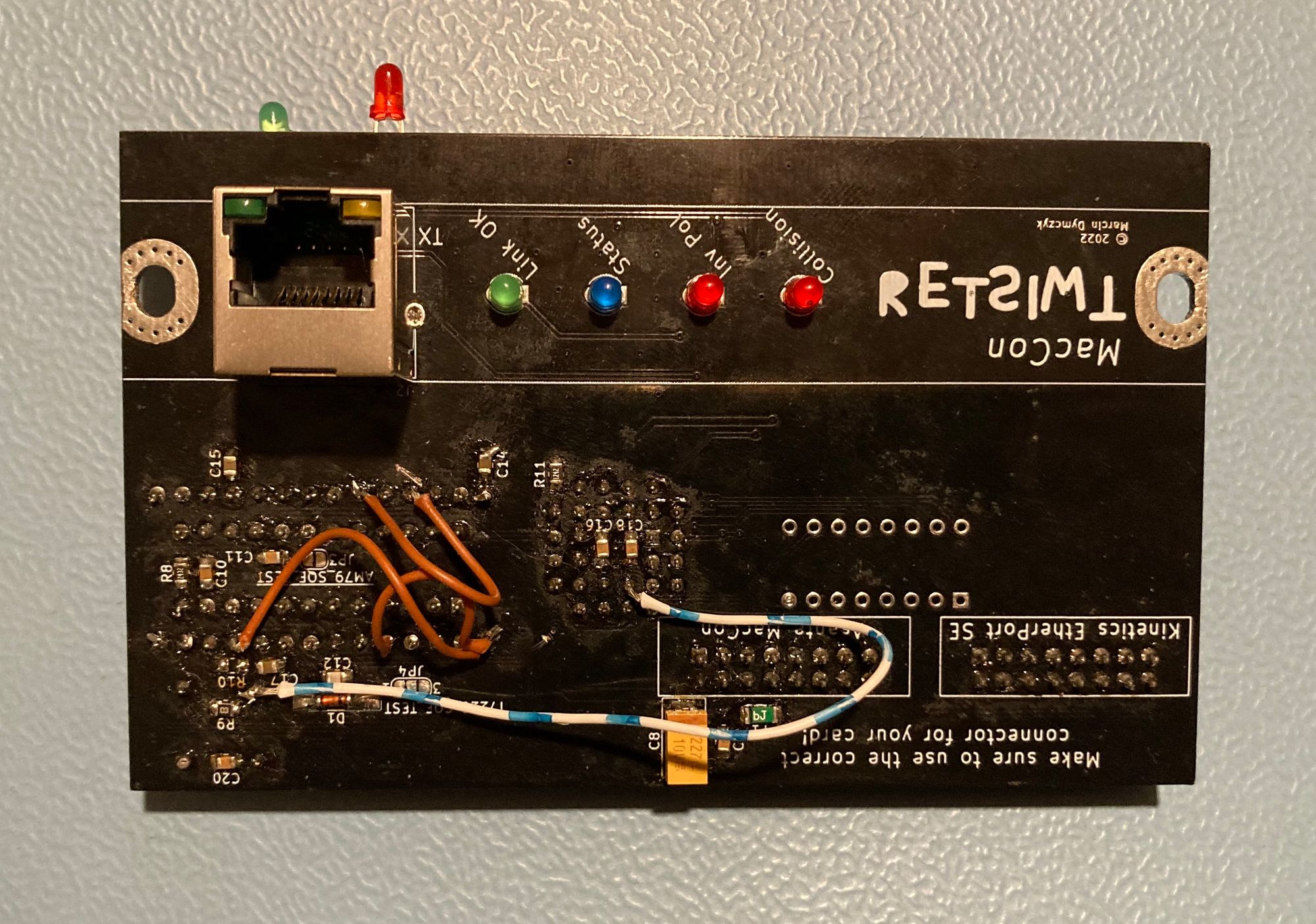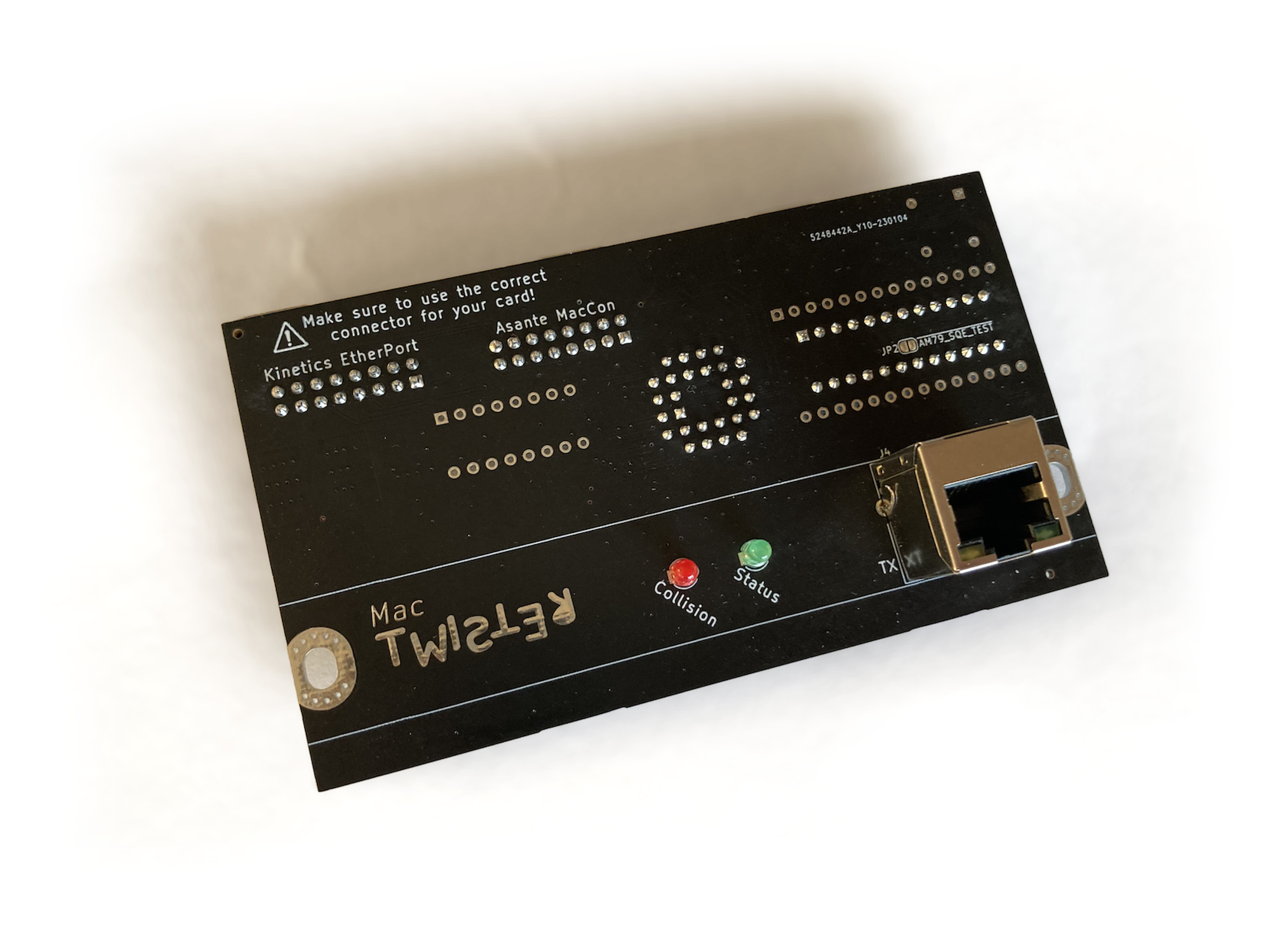
The MacTwister breakout board provides a standard RJ45 to Macintosh SE and Macintosh SE/30 computers equipped with common Asante MacCon, Kinetics/Shiva Etherport and Dayna Daynaport E/SI cards.
The first motivation is that many of those cards got separated from their breakout boards over the course of >30 years, making them virtually useless. On the other hand, the network card prices are going up and a project to reproduce the connector board starts to make economical sense. I myself came across a MacCon for SE which I really wanted to bring back to life.
The second motivation is that most of the connector cards only offer AUI and BNC (10BASE2) connectors, requiring an external box (such as CentreCOM AT-210T) that sticks out and doesn’t look too cool. Maybe I’m unlucky, but none of the cards I own actually came with a twisted pair interface.
Goals of the design:
- Support most common cards for SE and SE/30: MacCon, Etherport and Dayna.
- Support a number of transceiver chips to avoid being locked into a single no-longer-produced model, preferably without component changes.
- Use modern components (eg. an RJ45 jack with magnetics) to avoid sourcing anything exotic apart from transceivers.
Questions & Answers
What’s the deal with two 16-pin connectors?
Kinetics/Shiva Etherport and MacCon cards have different pinouts of the 16-pin cable to the connector card.
Please be extra careful about using the right connector for your card.
Please be extra careful about correctly orienting the plug in the socket (mind the Pin 1 markings). Note that MacCon cards do not use the common Pin 1 convention of the IDC connectors.
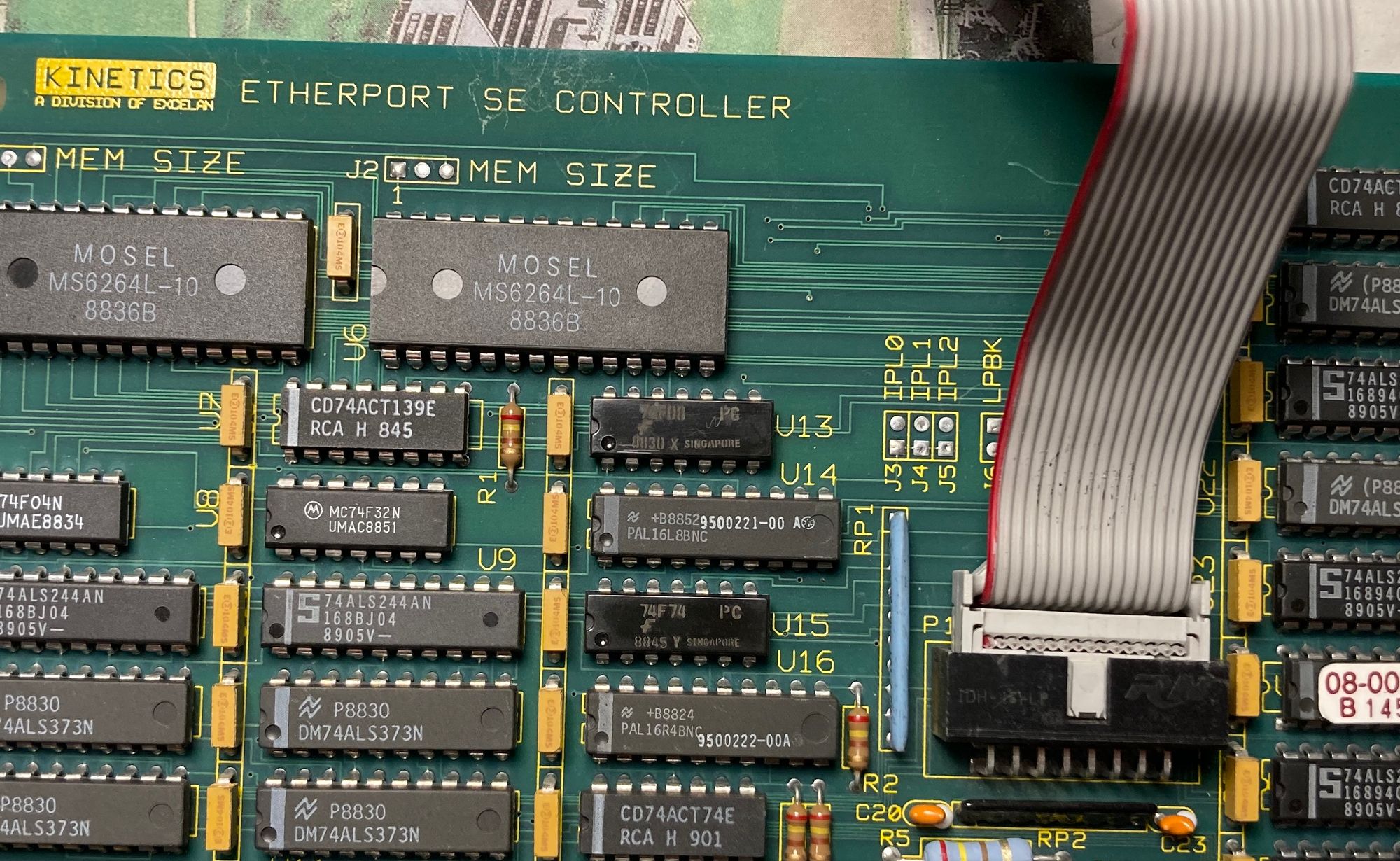
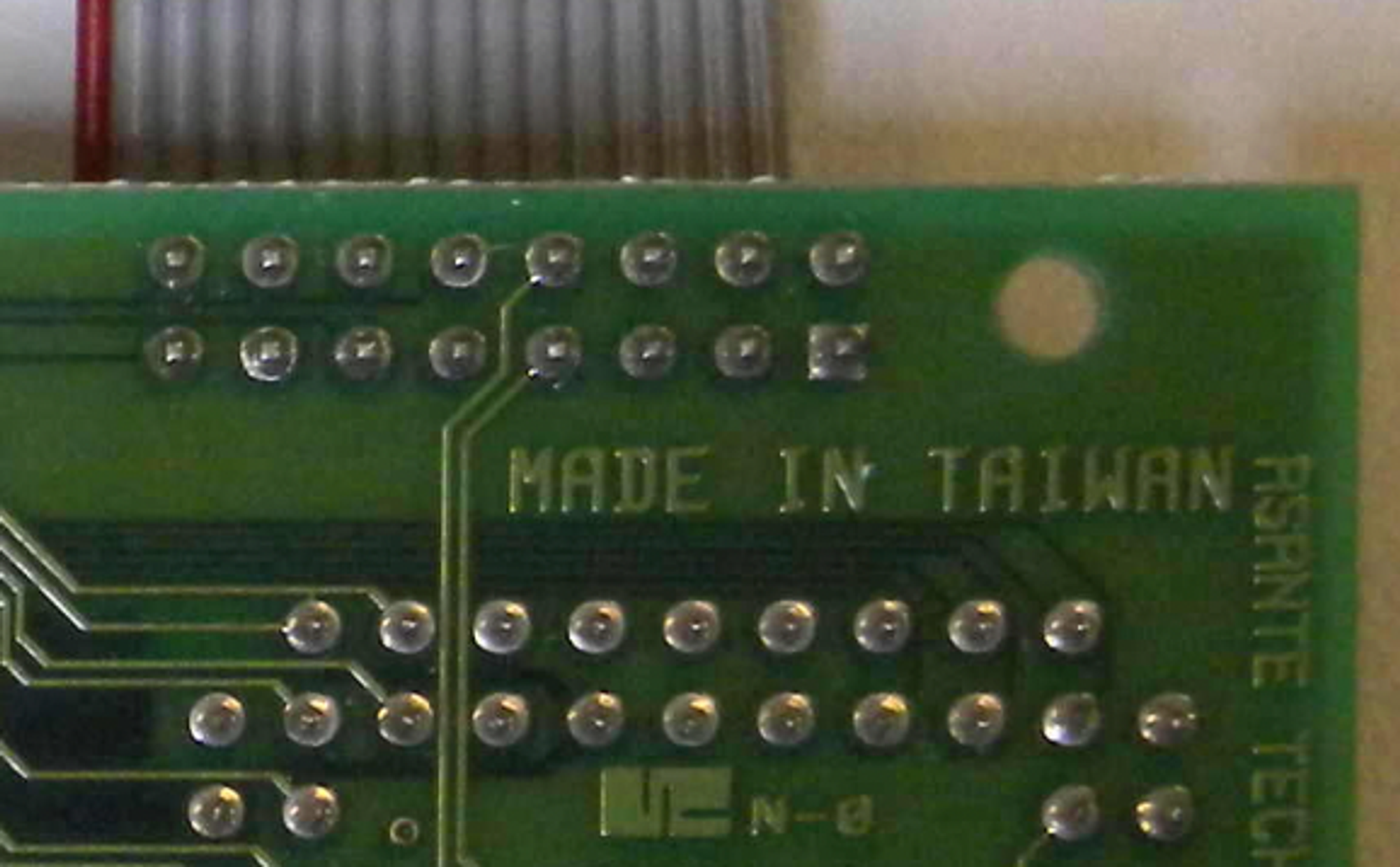
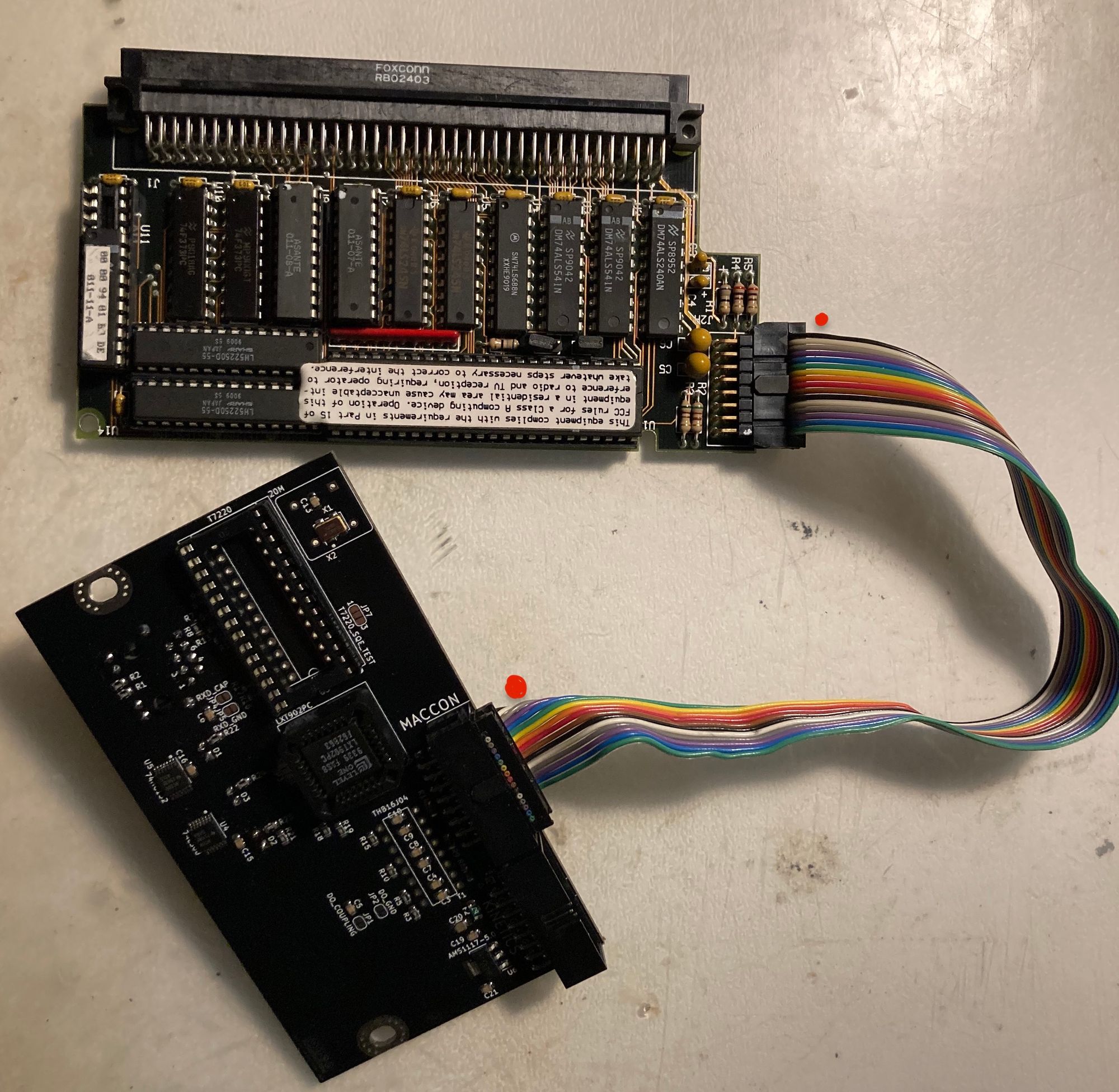
Both 16-pin connectors can be used without any changes to the board.
What’s the deal with three different sockets for transceiver ICs?
This board depends on No-Longer-Available AUI to Twisted Pair converters. Those transceivers has not been in production since decades so this design incorporates three different chips to let you pick a chip that actually shows up on the market: LXT902PC, AM79C89 or T7220 / T7220A.
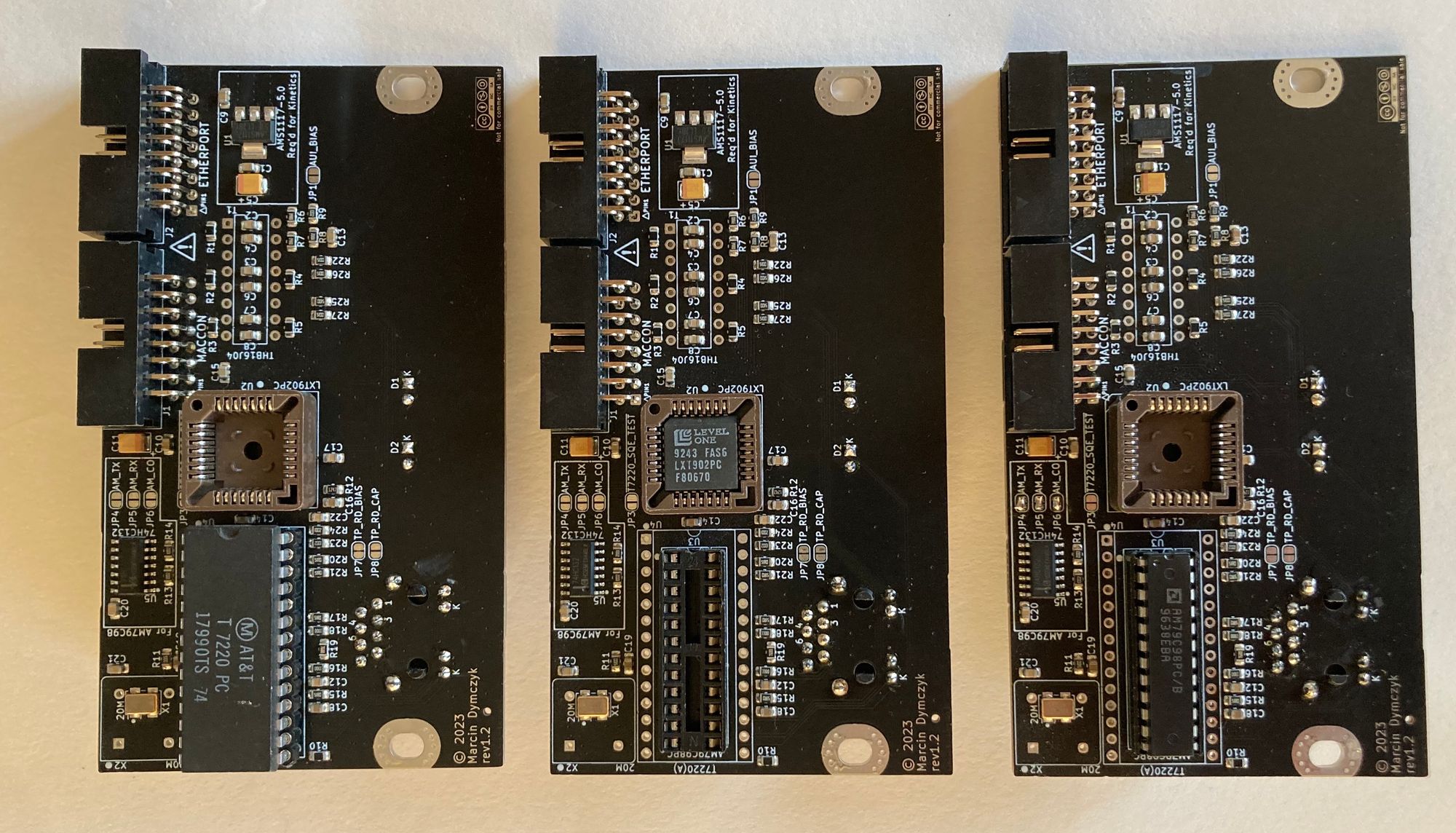
All three ICs are tested and work fine with a modern Netgear R7000 router.
Swapping chips requires no changes apart from bridging JP4, JP5 and JP6 jumpers to control the status LEDs.
What was it tested with?
The card was tested on SE (MacCon and Etherport cards) and SE/30 (MacCon).
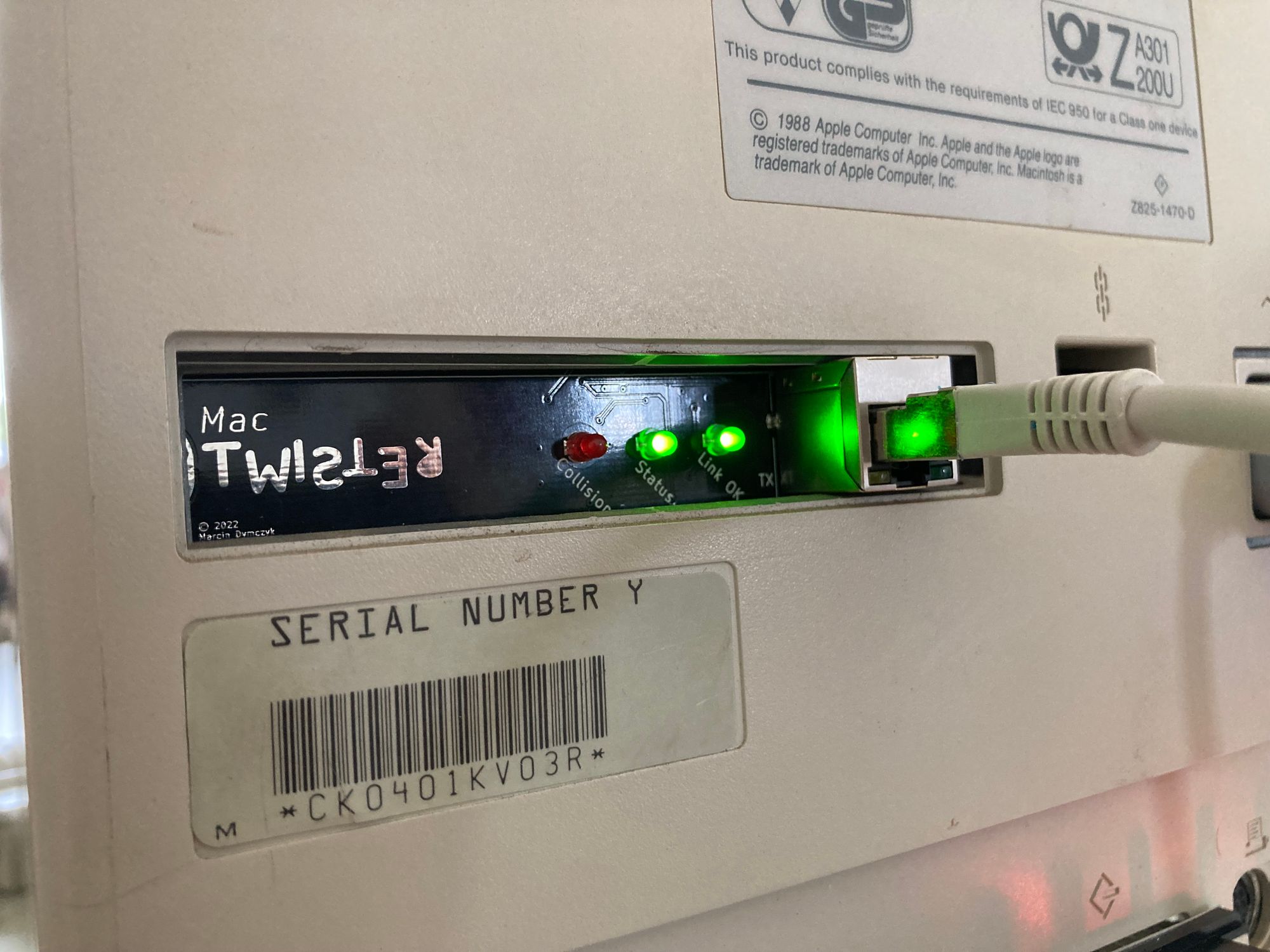
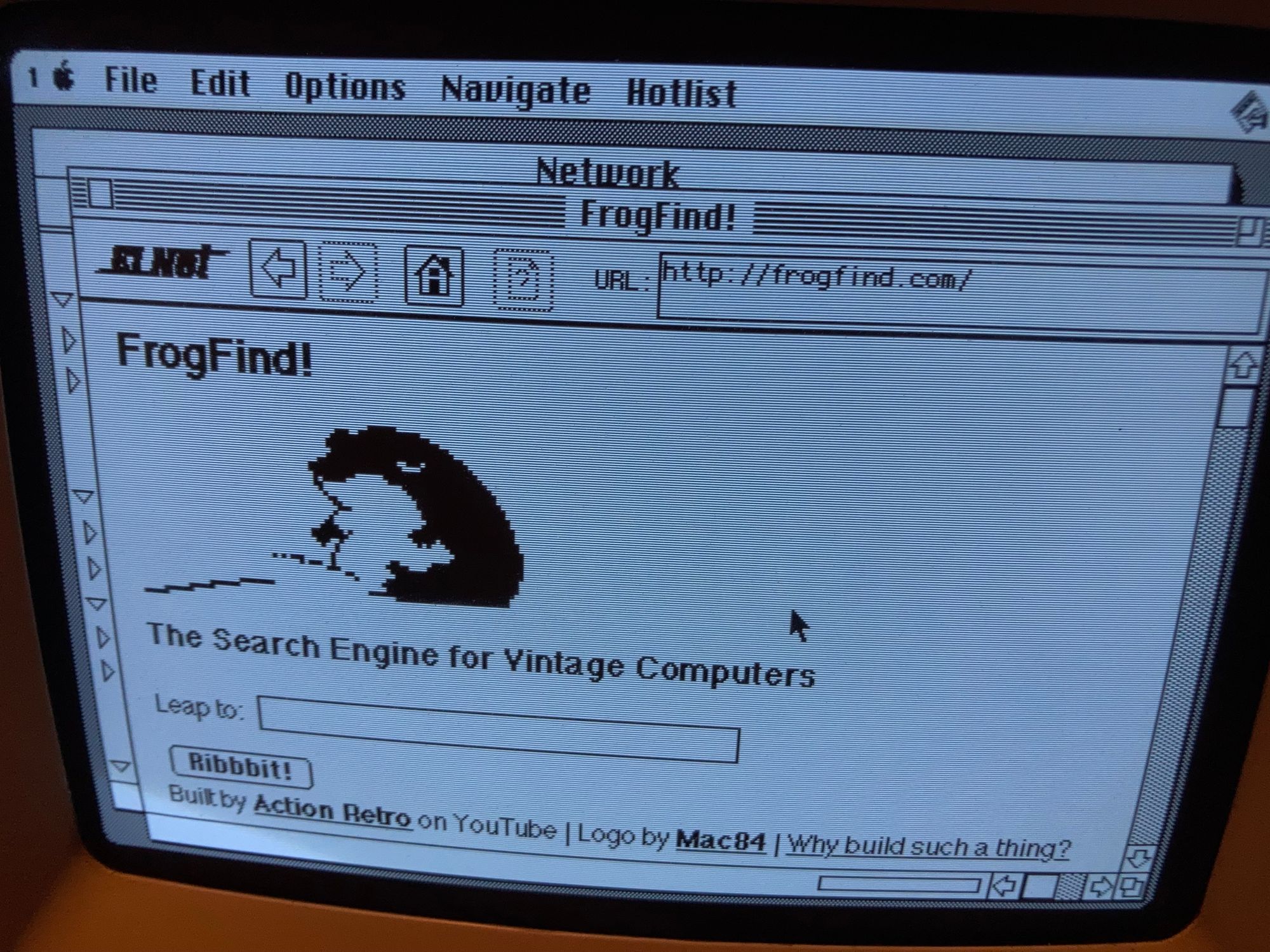
What was the journey to design it?
The circuit is fairly simple, but it took a few iterations to get it right. The transceivers are niche and their datasets had a few unclarities or even mistakes.
It turned out that T7220A is not just a revision of T7220 ;)
It also turned out that there’s no single common standard for RJ45 connectors and their pinouts, including the polarity of LEDs (sigh).
